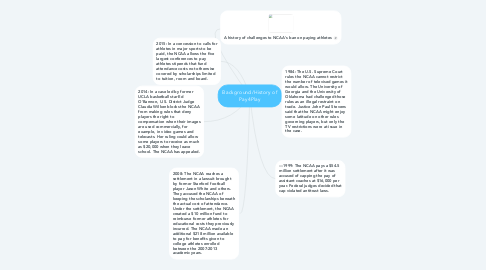Background/History of Pay4Play
Steven Newendykeにより

1. 2008: The NCAA reaches a settlement in a lawsuit brought by former Stanford football player Jason White and others. They accused the NCAA of keeping the scholarships beneath the actual cost of attendance. Under the settlement, the NCAA created a $10 million fund to reimburse former athletes for educational costs they previously incurred. The NCAA made an additional $218 million available to pay for benefits given to college athletes enrolled between the 2007-2013 academic years.
2. 2014: In a case led by former UCLA basketball star Ed O'Bannon, U.S. District Judge Claudia Wilken blocks the NCAA from making rules that deny players the right to compensation when their images are used commercially, for example, in video games and telecasts. Her ruling could allow some players to receive as much as $20,000 when they leave school. The NCAA has appealed.
3. 2015: In a concession to calls for athletes in major sports to be paid, the NCAA allows the five largest conferences to pay athletes stipends that fund attendance costs not otherwise covered by scholarships limited to tuition, room and board.
4. A history of challenges to NCAA's ban on paying athletes
5. 1984: The U.S. Supreme Court rules the NCAA cannot restrict the number of televised games it would allow. The University of Georgia and the University of Oklahoma had challenged those rules as an illegal restraint on trade. Justice John Paul Stevens said that the NCAA might enjoy some latitude on other rules governing players, but only the TV restrictions were at issue in the case.
6. —1999: The NCAA pays a $54.5 million settlement after it was accused of capping the pay of assistant coaches at $16,000 per year. Federal judges decided that cap violated antitrust laws.


